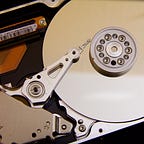Recycle Your Old Electronics to Save the World from E-Waste
Roughly 78 million metric tons of e-waste are produced each year, and that number is expected to grow by 33 percent over the next few years. But recycling electronics isn’t just a way to save space in landfills — it’s an important way to reduce the environmental impact of all those gadgets we collect and love so much. Find out how you can play your part in cutting back on e-waste with this article.
What is e-waste?
E-waste is a bean-shaped collection of scrap bits of electronic equipment that’s usually carefully packaged and must eventually be incinerated. Unfortunately, much of this waste ends up in landfills where toxic chemicals can leak into the soil and groundwater, contaminating our water supply. E-waste is generated by all kinds of industries. For some industries, it’s absolutely necessary, since it is required by law to be thrown out to prevent pollution of the air and water. For others, it’s a viable option as sort of a buffer between the businesses and employees who work on those specific devices, and the customers who buy them.
When comparing the numbers of e-waste versus other elements (natural, chemical, and other) to the earth’s total mess, the planet earth has nearly five times more e-waste than is found in the entire Amazon rainforest. These numbers from Reuters:
According to Amazon’s own reporting, the amount it generates every year is about 28.5 billion pounds. That’s around one sixth of the annual emissions of Canada, the European Union, and Mexico combined.
While this number may seem small compared to our larger contaminants like carbon dioxide and nitrogen oxide, this amount of greenhouse gases each year is equivalent to driving a car for more than 300,000 miles yearly.
Nicholas Raponi from Reuters talked with Steve Moses from environmental group Earth Save, who explained what each pound of e-waste is doing to the environment:
Manufacturers typically pay to have their e-waste landfilled and buried. Eventually this will be done by hand. Employees may receive training, and if the equipment is rare or valuable, they may also be paid to scavenge the material.
Sometimes the recycling and disposal sites are run by municipalities. When this is the case, the land is typically re-taken over by nature.
How recycling electronics benefits the environment
Recycling electronics is one of the best ways to protect the environment. It’s important to know that recycling electronics is the best way to protect the environment. Recycling companies purchase old electronics from households and business and recycle them for their parts. When these components are used in other electronics, the electronics manufacturers don’t have to pay for the materials, so they can recycle more materials and reuse them again more often.
Before I dig in further, here’s how it affects your credit score: Recycling costs money and can affect your credit score in some ways.
The Good, the Bad and the Ugly About E-Waste Recycling China produces a massive amount of e-waste. E-waste refers to electronic waste, including cell phones, tablets, computers, televisions, and any other electronic equipment. Recycling companies in China can buy old electronics from households and then recycle the leftover parts. Once it reaches recycling centers, the recycling company officially collects the leftover items and places them in regular trash bags. After collection, you can pick up your belongings and drop them off at a designated recycling center, or you can take them with you to another recycling center or drop them off at a designated collection site. Depending where you drop them off, your electronics will either be incinerated, incinerated and buried, loaded into dryers to be recycled (which is more environmentally friendly), or stack them up for transport to another recycling center. If you choose to take your e-waste to a recycling center, you’ll need to provide your recyclables with a ticket explaining that your e-waste is being sent to another location.
Typical Recycling Process A common recycling center will collect your e-waste and have it loaded onto trucks. One truck will go to a local dump, and the rest of the trucks will go to a incinerator that melts the e-waste, disassembles it, and then bury it.
How you can recycle old electronics and get rid of e-waste
When it comes to sending technology to the great e-waste in the sky, there are a few options. First, you can keep old electronics to use as spares. Second, you can donate old electronics to charities and non-profits, which may be able to repair them and donate them to low-income families. But leaving the massive gadgets behind altogether isn’t an option. There are solutions for those who opt for the recycling route.
Fixing over 90 percent of the world’s electronic waste can be achieved through factories that use real land to mix virgin products with e-waste, but how can walking you through those factories (ades — or even driving e-waste to be recycled) be as low-impact as possible? This question for another article for today I just end writing there. By the thank you all for reading this article hope you got some information about how e-waste are harmful for our nature soo don’t throw you old electronic instead you can recycle them.
